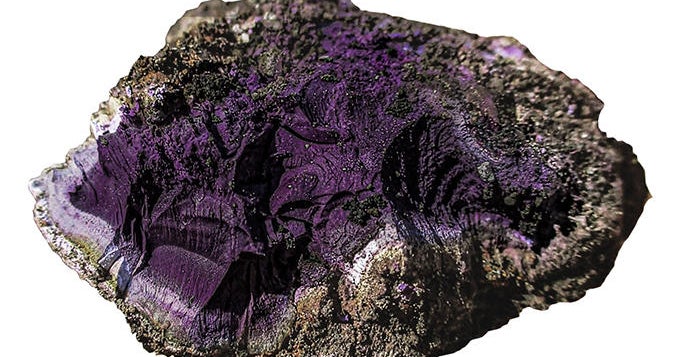'Incredibly rare' ancient purple dye once worth more than gold discovered in Britain

Archaeologists working in Britain have discovered a 'mysterious lump' of a purple substance that would have been more valuable than gold in Roman times. stated in a news release.
The researchers who discovered the “soft purple substance” have been working on a multi-year investigation. Roman ruins Carlisle, England, a cathedral city in the heart of the country. The excavation is being led by Wardell Armstrong, a UK-based environmental, engineering and mining company.
The material was discovered during excavations of Roman baths in 2023. Remnants of the 3rd century building still exist on the grounds of what is now a cricket club, according to a news release.
The team worked with the British Geological Society to test the material. Further analysis by experts at Newcastle University determined it was an organic pigment containing levels of bromine and beeswax, the release said.
wardell armstrong
These components allowed the researchers to identify the substance as Tyrian purple, a color associated with the Roman court. The pigment, made from thousands of crushed shells from the Mediterranean, North Africa and Morocco, was “incredibly difficult” and expensive to produce, making it worth more than gold at the time, according to the statement. It is said that there was.
The discovery of this material has led researchers to believe that the building they are excavating is associated with a royal court, and may even represent a visit to Carlisle by Roman Emperor Septimius Severus. Frank Gieko, technical director of the organization leading the excavation project, said this was an “incredibly rare” find, especially in Europe.
“This is the only example we know of in Northern Europe, and probably the only example where a solid sample of the pigment in the form of unused pigment has been found anywhere in the Roman Empire,” Gicco said in the release. “Examples have been found in wall paintings (such as in Pompeii) and in coffins with royal paintings in Roman Egypt.”
Summarize this content to 100 words
Unraveling Caligula's garden
Caligula's garden discovered in Roman parking lot excavation | 60 minutes
13:32
Archaeologists working in Britain have discovered a 'mysterious lump' of a purple substance that would have been more valuable than gold in Roman times. stated in a news release. The researchers who discovered the “soft purple substance” have been working on a multi-year investigation. Roman ruins Carlisle, England, a cathedral city in the heart of the country. The excavation is being led by Wardell Armstrong, a UK-based environmental, engineering and mining company. The material was discovered during excavations of Roman baths in 2023. Remnants of the 3rd century building still exist on the grounds of what is now a cricket club, according to a news release.
The team worked with the British Geological Society to test the material. Further analysis by experts at Newcastle University determined it was an organic pigment containing levels of bromine and beeswax, the release said.
Tyrian purple pigment.
wardell armstrong
These components allowed the researchers to identify the substance as Tyrian purple, a color associated with the Roman court. The pigment, made from thousands of crushed shells from the Mediterranean, North Africa and Morocco, was “incredibly difficult” and expensive to produce, making it worth more than gold at the time, according to the statement. It is said that there was.
The discovery of this material has led researchers to believe that the building they are excavating is associated with a royal court, and may even represent a visit to Carlisle by Roman Emperor Septimius Severus. Frank Gieko, technical director of the organization leading the excavation project, said this was an “incredibly rare” find, especially in Europe. “This is the only example we know of in Northern Europe, and probably the only example where a solid sample of the pigment in the form of unused pigment has been found anywhere in the Roman Empire,” Gicco said in the release. “Examples have been found in wall paintings (such as in Pompeii) and in coffins with royal paintings in Roman Egypt.”
More from CBS News
kelly breen
Kerry Breen is a reporter and news editor at CBSNews.com. A graduate of New York University's Arthur L. Carter School of Journalism, she previously worked at NBC News' TODAY Digital. She covers current events, breaking news, drug use and other issues.
https://www.cbsnews.com/news/rare-ancient-purple-dye-united-kingdom-tyrian-purple/ 'Incredibly rare' ancient purple dye once worth more than gold discovered in Britain







